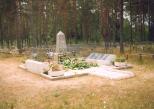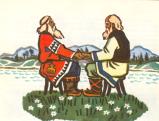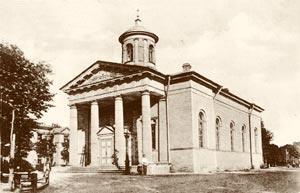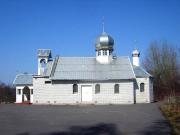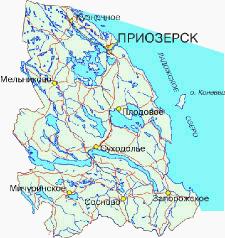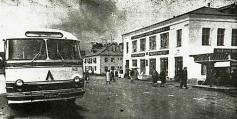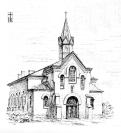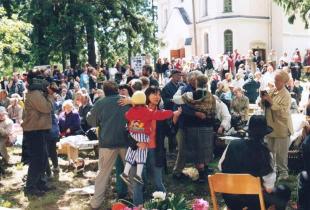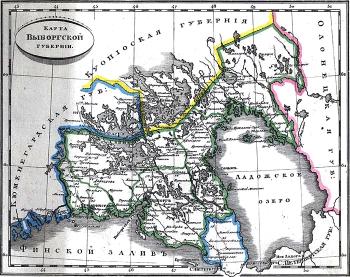Articles
/
Finns
Finns
Subject /
Ethnic culture/Ethnic communities
Subject /
Ethnic culture/Ethnic communities/
Subject /
Ethnic culture//
Finns (old use - Chukhnas, their native name is Suomalaiset) is an ethnic community which is a part of the population of the Leningrad Oblast. In the world there are more than 5 million Finns. They are the main population of Finland (4,6 million people). Finns also live in Sweden (300 thousand), in the USA (300 thousand). In Russia (the Leningrad Oblast, Karelia, Saint Petersburg, the Murmansk Oblast) there are 34364 people; in the Leningrad Oblast there are 7965 people (for 2002, including the Finns of Ingermanlandia). Finns were formed as a result of merging the tribes Sum, Yem (Tavastas), Karelians of Vyborg and Prisaiminskye Karelians. The Finnish language is related to the Finno-Ugric group of the Uralic language family. The religious Finns profess Lutheranism. On the territory of the Leningrad Oblast proper Finns or Finns-Suomi Lived (former Vyborg Gubernia of Finland, now they're Vyborg and Priozersk districts) and Finns of Ingermanlandia lived. The Finns of the Vyborg Gubernia, in contrast to the population of the rest part of the Grand Duchy of Finland, were lessees of independent farms; only about 3% of them were related to the category of torppari (landless peasants-farm labourers or those having little land). In the 19th century the individual farm system was formed. Migrants from the Vyborg Gubernia lived in Saint Petersburg, the Saint Petersburg, Olonetsk gubernias.Their traditional home is a wooden log house having a gable roof. For the Finnish men's clothes waistcoats,jackets, caftan's are typical; women wore skirts, sleeveless bodices or jackets, married women wore caps (the colours of clothes differ according to the parishes). In the food ration bread, milk dishes, fish predominated. Their traditions have been kept in the calendar rites (see Juhannus), the rites of the life cycle. Finns of the Vyborg Gubernia had lots of folk works written down (see Singers of Runes, T.Schwindt, D.Europeus). Finns, who lived on the territory passed to the USSR in 1940 after the Winter War, were evacuated to Finland and finally left their native land after a short-term return in 1941-44. The Finnish population of the Leningrad Oblast are mainly the Finns of Ingermanlandia.
Authors
Chistyakov, Anton Yuryevich
Persons
Europeus, Daniel
Schwindt, Theodor
Geography
Neighbouring Territories/Finland
Historical Toponyms/Grand Principality of Finland
Neighbouring Territories/Karelian Republic
Historical Toponyms/Olonets Gubernia (Province)
Leningrad Oblast, the/Priozersk District
Historical Toponyms/Saint Petersburg Gubernia, the
Saint-Petersburg City
Leningrad Oblast, the/Vyborg District
Historical Toponyms/Grand Principality of Finland/Vyborg Province
Bibliography
Высек пламя Илмаринен. Антология финского фольклора. М., 2000.
Энгман М. Финляндцы в Петербурге. СПб., 2005
Финны в России. Петрозаводск, 1998
Talve I. Finnish folk culture. Helsinki, 1997 (Studia Fennica Ethnologica. Vol. 5).
Subject Index
Finns of Ingermanlandia
Karelians
Singers of runes
Uhannus, a festival
Mentioned in articles:
|
hidden
|
Ethnic deportations
Ethnic deportations are forced resettlement carried out according to an ethnic signs. In 1935-36 in the Leningrad Oblast there were some activities on purging the zone of land with 22 kilometres wide at the border with Finland "from kulak and... more
|
|
|
|
hidden
|
Finland
FINLAND, country in Northern Europe. Borders Sweden, Norway, the RF (Murmansk Oblast, Republic of Karelia, Leningrad Oblast.) Located on the coasts of the Gulf of Bothnia and Gulf of Finland, Baltic Sea. Area: 338,000 sq. km (abt. 10% being inland... more
|
|
|
|
hidden
|
Finno-Ugric nations
Finno-Ugric nations are ethnic communities speaking the languages of the Finno-Ugric group which is a part (together with the Samoyedic and Yukaghir groups) of the Ural (Uralic-Yukaghir) language family. Finno-Ugric nations have lived historically... more
|
|
|
hidden
|
Folklore
FOLKLORE of folks living in the Leningrad Oblast (ref. Ethnic communities in Leningrad Oblast) is multilayer polyethnic heritage which appeared as a result of rich history of the region. One of the first people to study the Veps in the period of... more
|
|
|
|
hidden
|
Germen
The Germans (their own native name is Deutsche) are an ethnic community which is a part of the polpulation of the Leningrad Oblast. The religious Germans are Lutherans and Catholics. The Germans are the main population of Germany. In Russian (in... more
|
|
|
|
hidden
|
Kingisepp District
KINGISEPP DISTRICT, a part of Leningrad Oblast. Population: 74,300, of which, 52,100 live in the adm. center Kingisepp Town. Area: 2842.1 sq. km. It has 191 rural settlements. It was established in 1927.It borders with Lomonosov, Volosovo, and... more
|
|
|
|
hidden
|
Population
Population. According to the census of 2002 in the Leningrad Oblast there were 1669,205 thousand people; according to the estimate made on 1 July 2005 there were 1647,6 thousand people including the town dwellers numbering 1093,9 thousand people... more
|
|
|
hidden
|
Priozersk District
PRIOZERSK DISTRICT, municipal entity. Population: 63,300 (of these, 20,500 live in Priozersk town, the adm. center.) Area: 3,563.1 sq. km. Located in the eastern and north-eastern parts of the Karelian Isthmus. It borders Vsevolozhsk and Vyborg... more
|
|
|
|
hidden
|
Resettlements of the 1945 - 1950s
Resettlements of the 1945 - 1950s were migrations which were caused by political (eviction of some categories of citizens who were considered as unreliable, including the activities for cleaning up the frontier) and economical (the necessity of... more
|
|
|
hidden
|
Roshchino, urban settlement
ROSHCHINO (Raivola [Finnish] before 1947), an urban settlement in Vyborg District. Population: 9,400. It is situated the bank of the Roschinka river (former Raivolanjoki), at the railway station of the same name of the St. Petersburg-Vyborg branch.... more
|
|
|
|
hidden
|
The Lutheran Church of St. Andrew (Bolshoye Kuzemkino Village, Kingisepp District)
The Lutheran Church of St. Andrew (Bolshoye Kuzemkino Village, the Kingisepp District). A Lutheran community was founded in 1640, from 1704 it was added to the Narva church of St. Michael. The first Church of St. Andrew was consecrated on 30... more
|
|
|
|
hidden
|
Uhannus, a festival
UHANNUS, festivity. This festivity is well known among the Finns from pre-Christian times, it was celebrated on the day of Summer Solstice (the Day of Ivan – Finnish Uhannus). The Luthran church celebrates Uhannus on June 24th (public street... more
|
|
|
|
hidden
|
Vyborg Gubernia, the
VYBORG GUBERNIA, historic adm. and territorial unit of Russia and Finland. It occupied the northern part of the Karelian Isthmus, Northern Coast of Ladoga, south-east of the current Finland. In the Middle Ages, V. G. was the places of ethnogenesis... more
|
|
|
|
hidden
|
|
hidden
|
|
hidden
|
|
hidden
|
|
hidden
|
|
hidden
|
|
hidden
|
|
hidden
|
|
hidden
|
|
hidden
|
|
hidden
|
|






